We're very excited that The New Kaiser Mall Entrance is looking this cool!A few more big things to go, but looking really great already.....
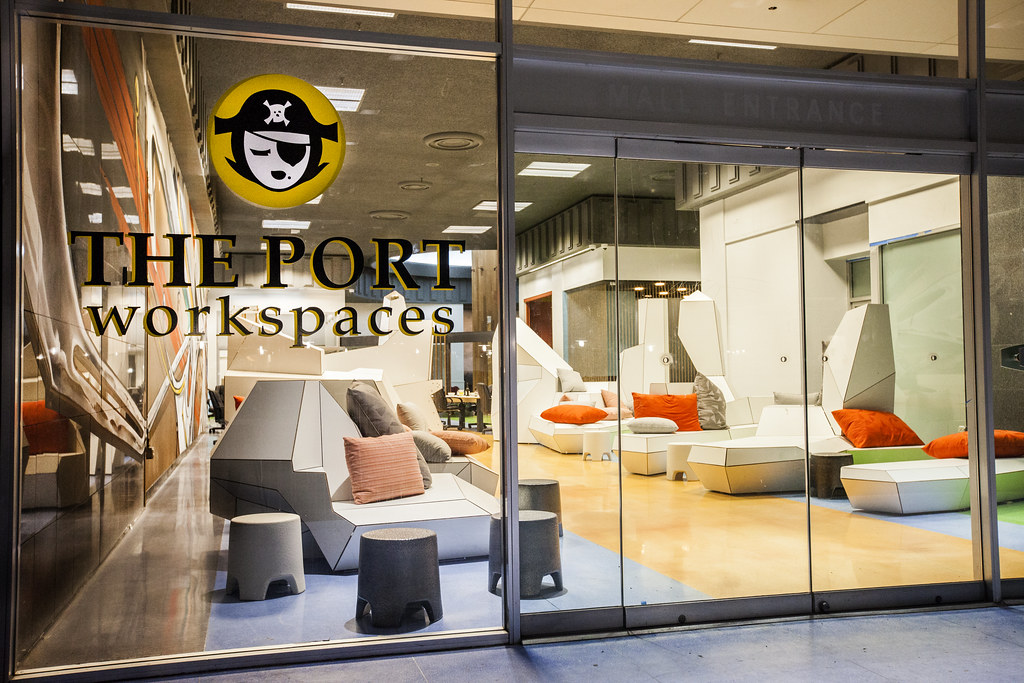
Goings on at the BWC Architecture Studio
We're very excited that The New Kaiser Mall Entrance is looking this cool!A few more big things to go, but looking really great already.....

The large three floor renovation at the Kaiser Building on Lakeside in Oakland is feverishly underway for The Port Workspaces!We worked on the interior design layouts and concepts all last year. Since then we've been busy fabricating our designs and installing them in the new space. The project is looking awesome, and parts of it are already open!
Just on the first floor alone, we have been painting walls,
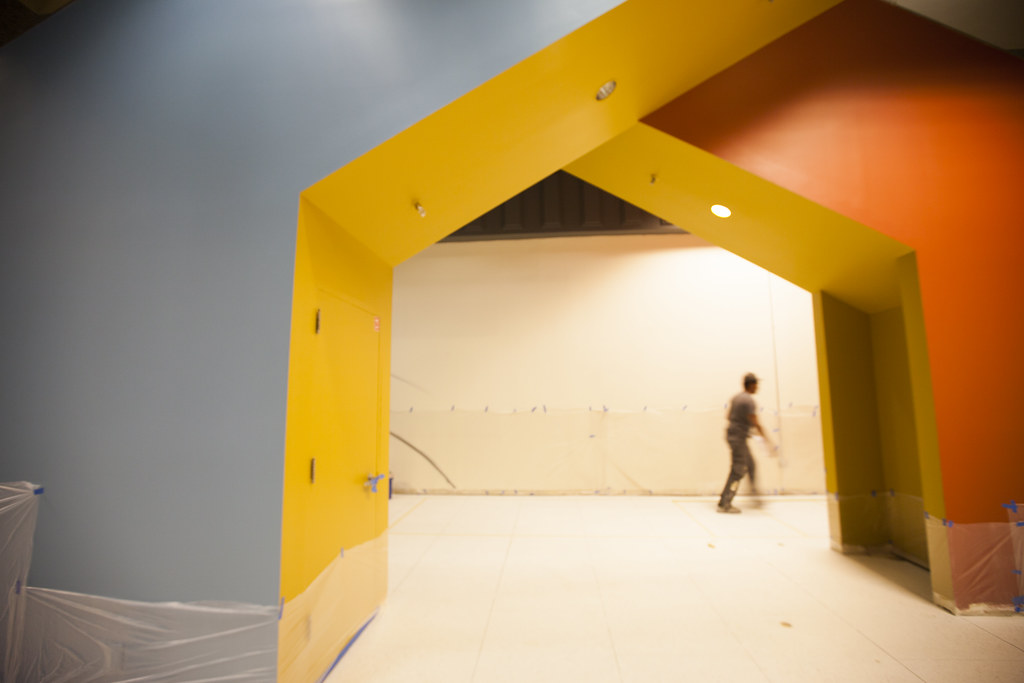
and painting huge murals! (mural work by GriffinOne
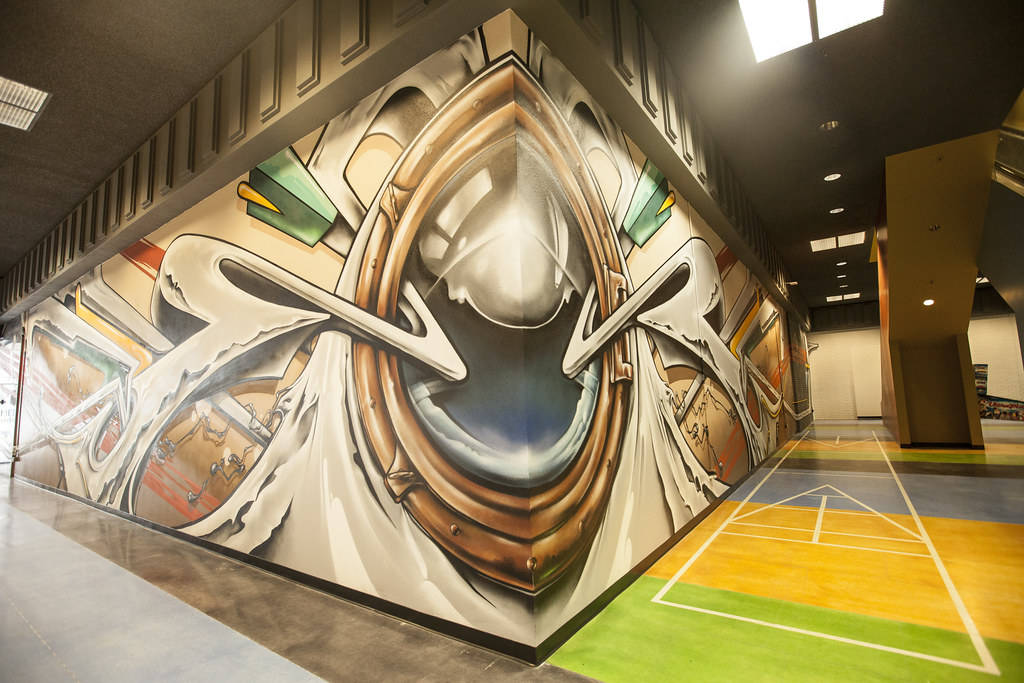
dying fun colors and games into the floor,
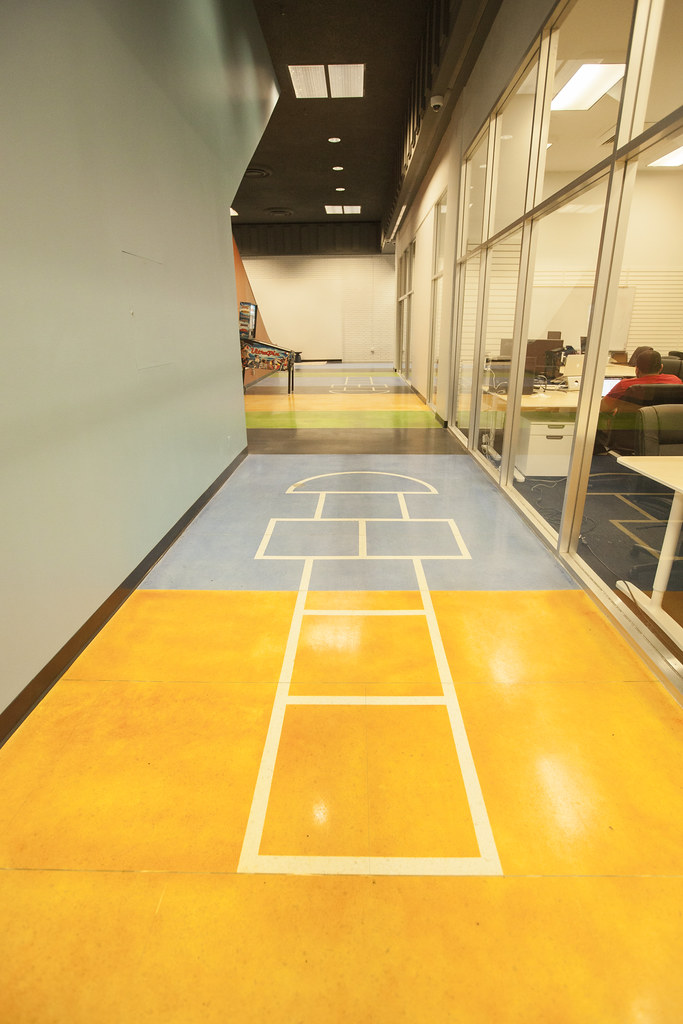
and building water features with bench seating.

We recently brought in huge shipping containers to build out into work spaces
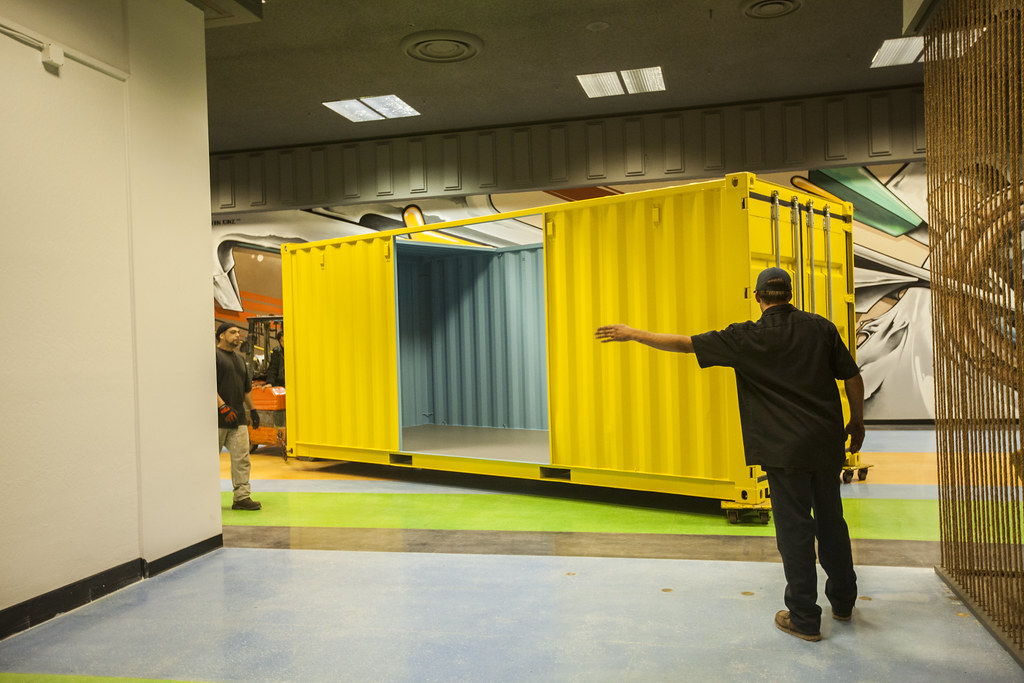
and put up a fun rope wall corner to define the lounge area...
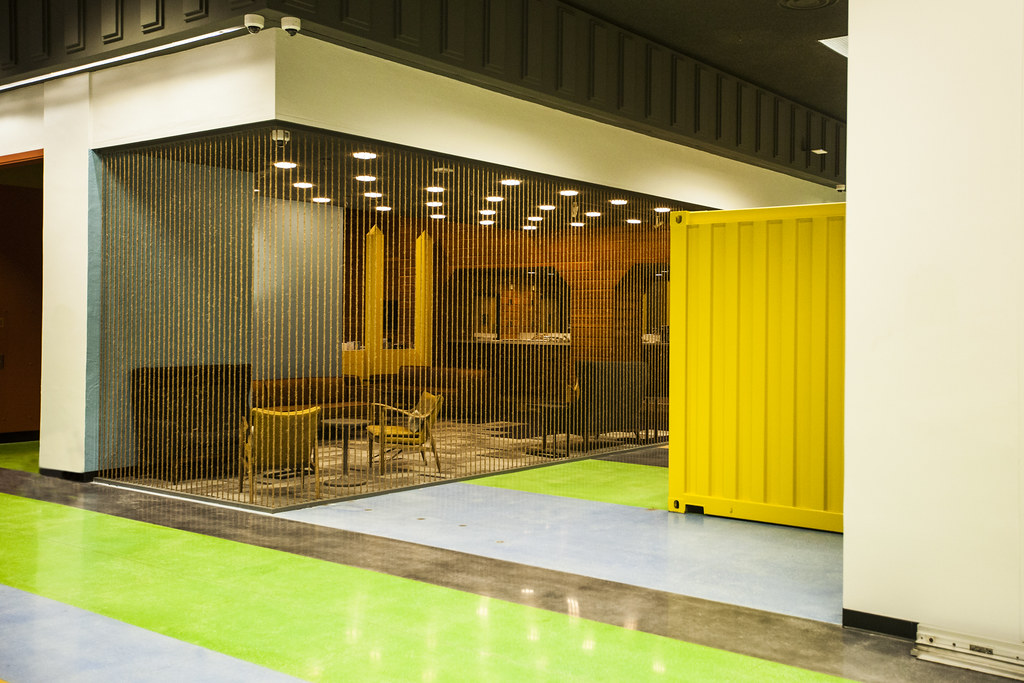
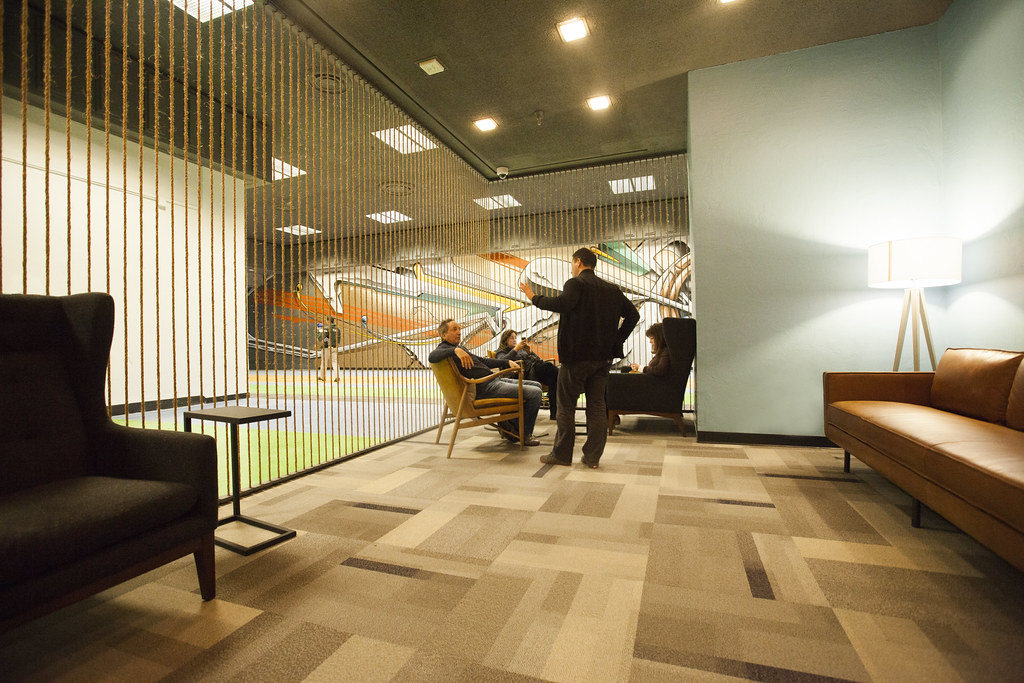
Check out this neat video of the rope wall going up!
This Thursday, February 11th, Jeffrey will be presenting several different projects we're in the middle of and our unique design-build studio's method of executing on them.
The talk takes place from 6:00 pm to 8:30 pm at the Chroma Gallery 312 S A St, Santa Rosa, CA 95401.
Would love to see you there!
Here at Because We Can, we work with a variety of robots and robotic tools. We've almost a decade of experience with it, and we've learned a great deal along the way. And we love to share what we've learned with you. We interchangeably use the terms 'robot', 'robotic tools', and 'automation' to all mean the same thing: whether by a physical robot, custom computer code, CNC tool, or some combination therein, you're automating some task such that it's not being done by the labor of a person.
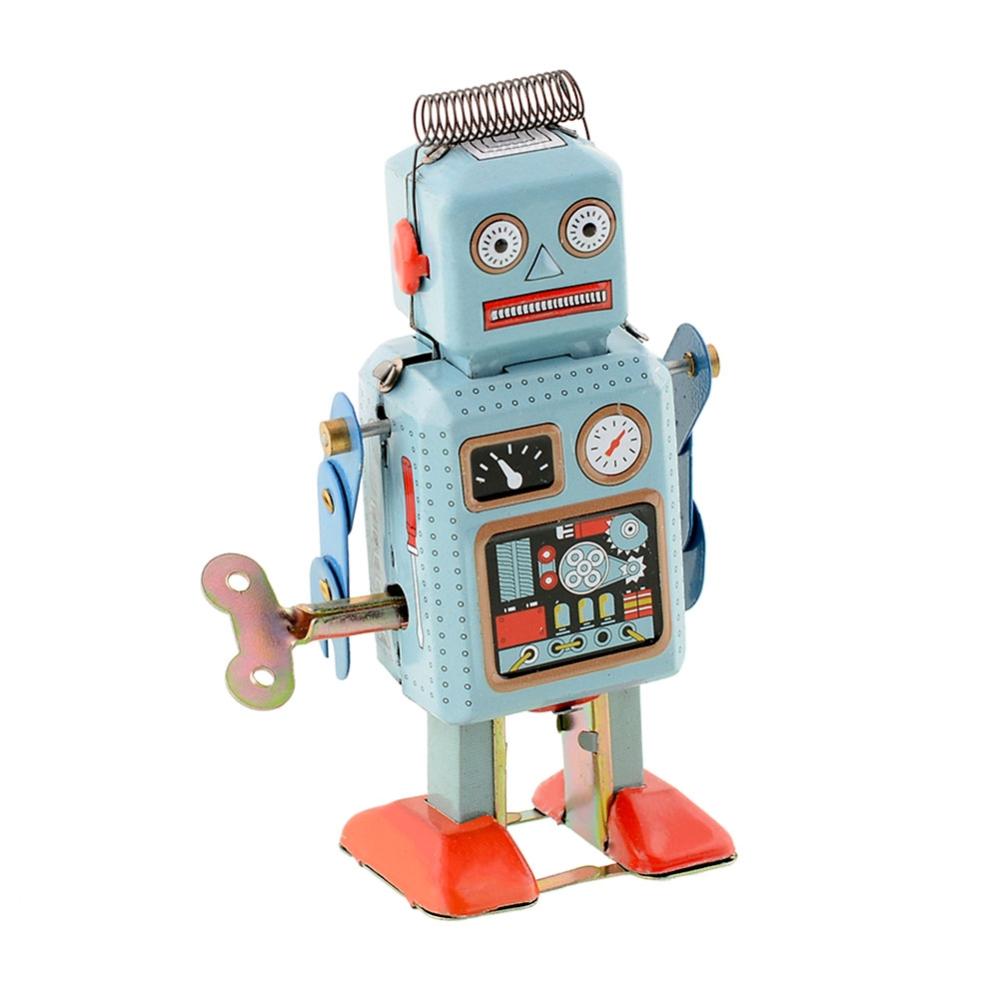
When thinking about having a robot do a job, it's important to know why you're going to have the robot do something rather than a person. Robots aren't always better than people, and can be expensive to set up, so you run the risk of spending a lot of time and money with not enough return. Or actually making the end result worse by trying to automate it. Automating something doesn't automatically make it better, and robots aren't great at everything.
We've found that there are four levels of tasks one can give a robot, each increasing in complexity of what the robot can do versis a person. Each one has it's own challenges and risks, so it's important to know where the task you're looking to automate falls. Critically thinking of it in this way will help you from making a costly mistake, and make the best use of automation for your company.

This is a task where it doesn't really matter if the task is being done by a person or a robot. Packing boxes, sorting/loading parts, moving pallets around a warehouse, and other rather basic tasks are good examples what we call Same Job, Only Cheaper. It's where the only value added by doing the task with a robot is that, once the robot is setup, it can do the job cheaper than a person can. Maybe that's because the robot is able to work 24/7, maybe it's because automating the task frees up someone to do higher-value work, maybe it's because the robot replaces several workers and thus is just plain cheaper over time. But what's key here is that whatever the task is, it's not that the robot is that much better at it, it's really just a matter of economics. So when automating this sort of task, the setup and ongoing maintenance costs of the automation are really important to keep under control. Also it's important to remember that robots tend to be very non-adaptable, and can be expensive to re-tool when the task changes. So the economics of it might not work out if retooling costs keep eating up any savings from having a robot do the job instead of a person. People are smart, flexible, and adaptable. Robots aren't.

This is a task where a robot can do the task better than a person. Repetitive production welding, assembly line painting/assembly, basic CNC milling, and other tasks that depend upon accuracy and repeatability are good examples of tasks we call the Robot Does It Better. The value add is obvious, for here the robot is obviously better at the task than a person. But it's important to really understand the task, and if it's really true that the robot is better in this specific instance. While a robot can make a great production welder, being more consistent than a person, if the welding requires great finesse, lots of one-off situations (like repairing elements), or hard-to-reach locations, a person could still be better in the bigger picture. Because setting up the robots takes a non-trivial amount of time and money, it may be better for some tasks to be handled by a skilled person rather than a robot, even if theoretically the robot could do a more accurate and consistent job once set up. Skilled people can make amazing things, robots can only do exactly what you set them up to do.

This is a task where not only does a robot do it better, but it makes something that would normally be unbearably complex simple. Complex CNC milling, complex sheet metal folding / punching, complex assembly, and other tasks where every part is unique and there are many parts are good examples of what we call the Robot Makes It Easy. While it would be time-consuming and difficult for a person to cut out hundreds of different unique parts, it's trivial for a robot to do so. This is an area we here at Because We Can are very familiar with, as many of our designs would be far too complex to produce economically by hand. It's an exciting area where working with a robot can add a lot of value. However, while we cut out almost all our parts using robotic tools, we still hand-assemble everything. The key with tasks like this is to use the robot for what it's great for, and use the people for what they are great for. Because we're very rarely making the same thing twice, and we pride ourselves on our high level of craftsmanship of what we make, we've found that the combination of robot-cut parts and skilled assembly and finishing is a winning combination for the kind of work we do.

This is a task that can only be done by a robot, and simply can't be done by a person. Working in extremely hazardous locations, trochoidal milling processes, additive/subtractive combined manufacturing, and other tasks that are only possible by using a robot are good examples of tasks we call the Robot Makes It Possible. A great example here is the aforementioned trochoidal milling, A.K.A. 'high speed toolpaths', where a CNC machine moves in an incredibly complex and fast series of arc motions no person would be able to do, no matter how talented a machinist, to cut out complex parts significantly faster. It's not just that the robot is better at this task, it's that there is no way a person could even do the same task in the same way. This is an area where robots can add a significant amount of value, and in some instances can even be the basis for an entire company, invention, or industry. However these are also some of the most complex tasks to use a robot for, requiring either expensive software, talented engineers, or in many cases both. These tasks also require a great deal of vision, for much of the time it's something that's never really been done that way before. So these tasks can also require a great deal of creativity. However, thankfully, due to modern software, sometimes these sorts of tasks can be made accessible. For example, Fusion 360's CAM module does HSM toolpathing, and even makes the process very easy and accessible to even beginning machinists. So the real risk of these tasks is either trying to do them in a way that's too complex, or re-inventing a solution someone else already has that's better than what you came up with. If you think it's only possible with a robot, then you want to do your research and legwork, and find the very best way to only do it with a robot.
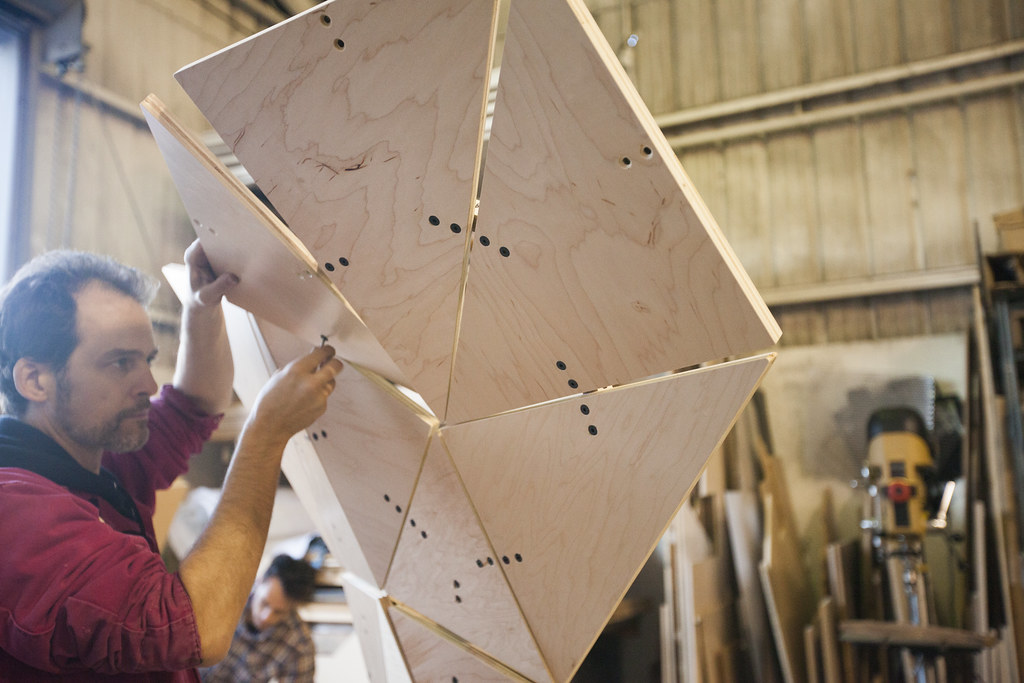
While automation is a powerful force, robots are totally awesome, and we dearly love our CNC tools, just like with any technology knowing when and how to apply it is the key to great success. We think that the real money is in empowering people, not replacing them, and that trying to fully automate everything quickly has diminishing returns. People working together with robots can make better, more amazing things more efficiently than robots alone ever could.
We hope our four levels are useful to your thinking, and we'd love to hear what you may have discovered working with these tools too.
A couple of our projects were just picked up for this article on the Coolest Office Spaces In SF. While we think that all of our SF office projects are the coolest, we'll take the good press!
This article calls out specifically one of our lastest projects done for the new Dolby Headquarters on Market Street in downtown SF.

It also calls out an older project of ours that was super fun to work on, the Three Rings Design office, also in downtown SF.

We're assuming they did not mention these cool shipping container lounges we did for the new Google office just a few months ago, because they are in MountainView.... so that would not fall under the same headline. We understand. But converting those shipping containers into amazing little office lounge spaces sure was a fun project. And they came out so cool!
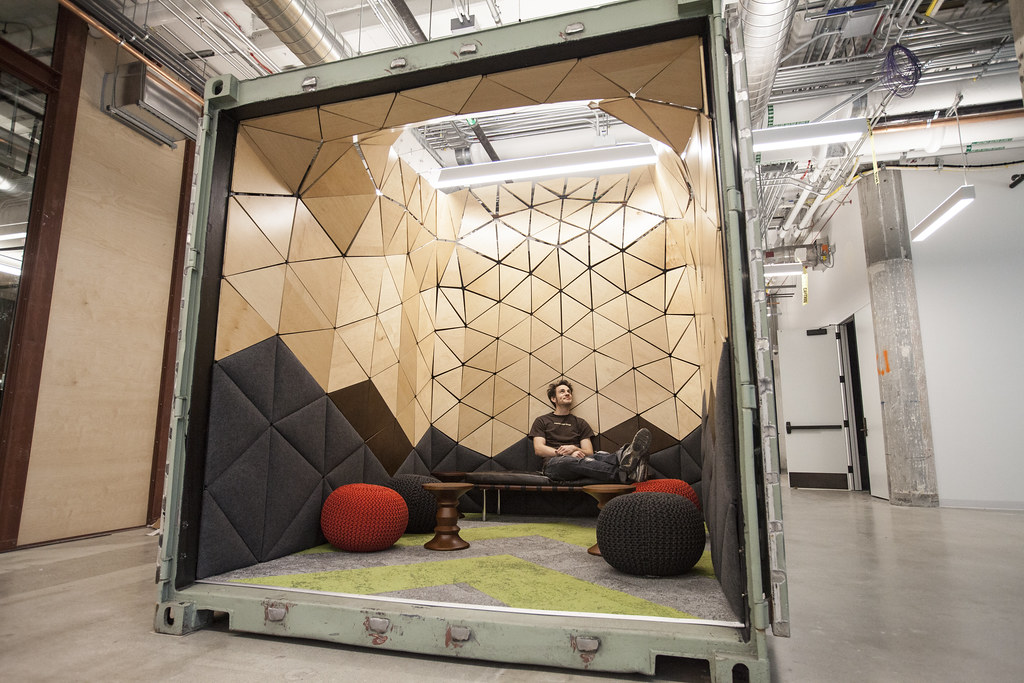
And of course they could not know about the awesome new office spaces that we're creating for The Port Co-working in the Kaiser Building, Oakland.
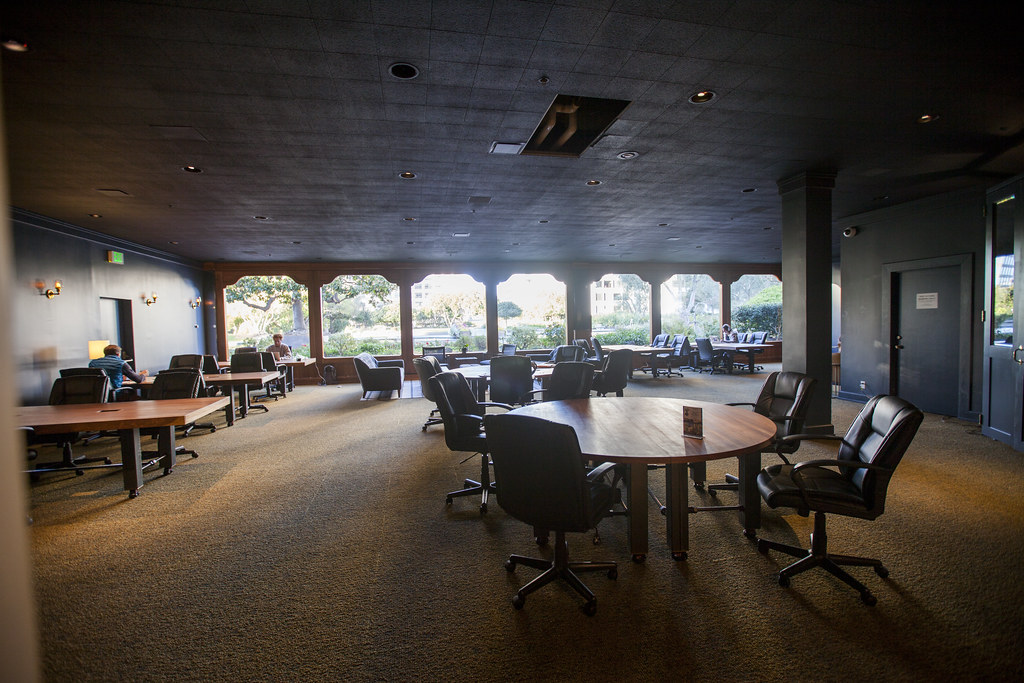
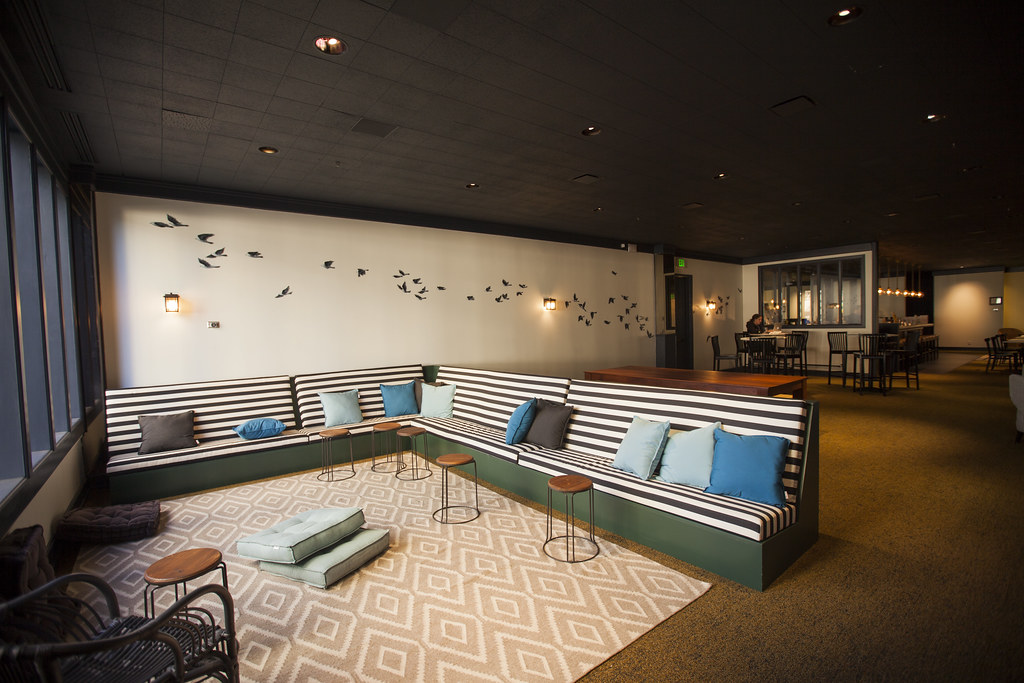
That project has yet to be fully revealed, but the 3rd floor co-working office space and event spaces are open and looking great. Can't wait to reveal the rest of that project soon!
We are very excited about 2016 and some of our great projects that will open this new year!For much of 2015 we helped The Port WorkingSpaces open a new and ambitious project in Oakland by Lake Merritt.
The roof deck and 3rd floor co-working space there has been open for months. The other two exciting spaces will open soon in 2016!
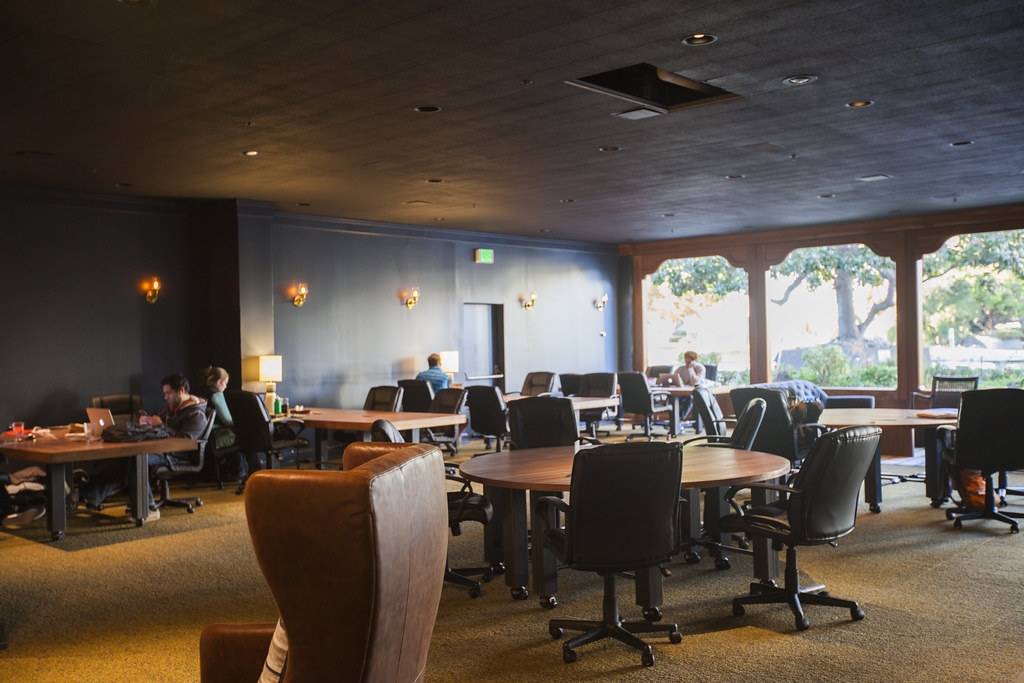
We have been working hard to get those two final spaces done so we can show them off, as they are looking really great!
Meanwhile, here are some images of the completed 3rd Floor and roof deck comprising of co-working spaces with large communal tables, meeting rooms, lounges and event areas both indoor and out.
When you enter the 3rd floor and walk through the large double doors, you are greeted by this really cool space. Once a large restaurant, we kept all the
original molding and wood details wood, just updating the paint, carpet and lighting.

Some of the furniture we sourced, and the rest of it we designed made to have the perfect aesthetic and functionality for the space, like these large
walnut tables on rolling legs.
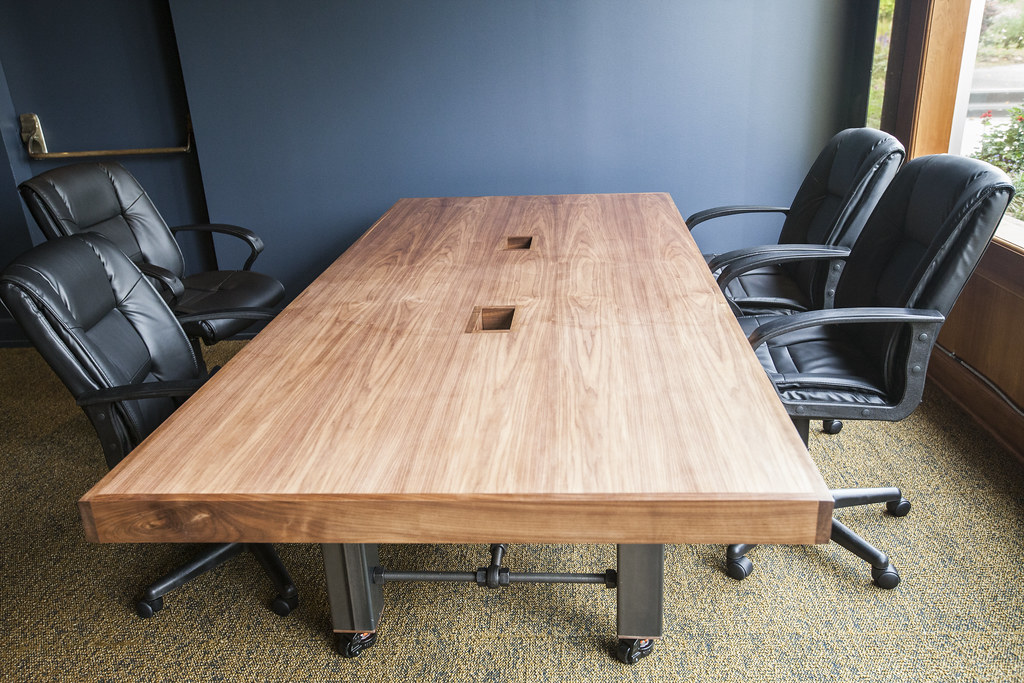
Big tube steel legs add a cool aesthetic and make for a very sturdy table on locking casters.

Some of the rolling tables were done in half rounds that can be joined together to add more diversity to the seating options.
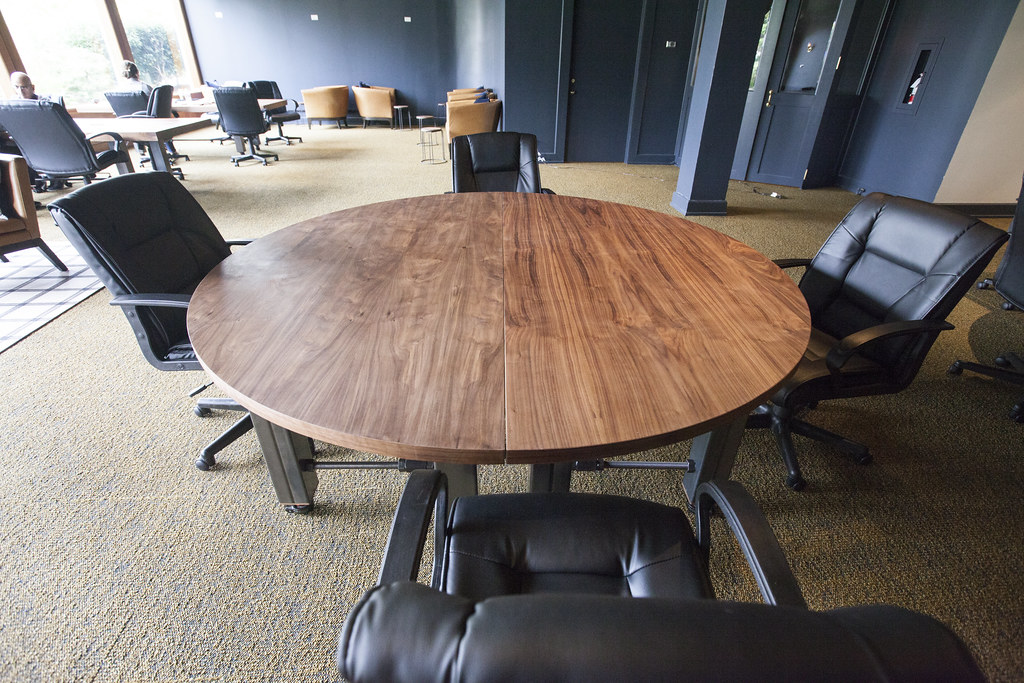
For the indoor event areas of the 3rd floor we designed and made these hard wood Machiche tables.

The lounge area by the indoor event space we designed with these long, low bench seats.

Then finally, as you enter onto the roof deck you see that much of it has been covered in thick, soft astroturf with modular sofa seating.
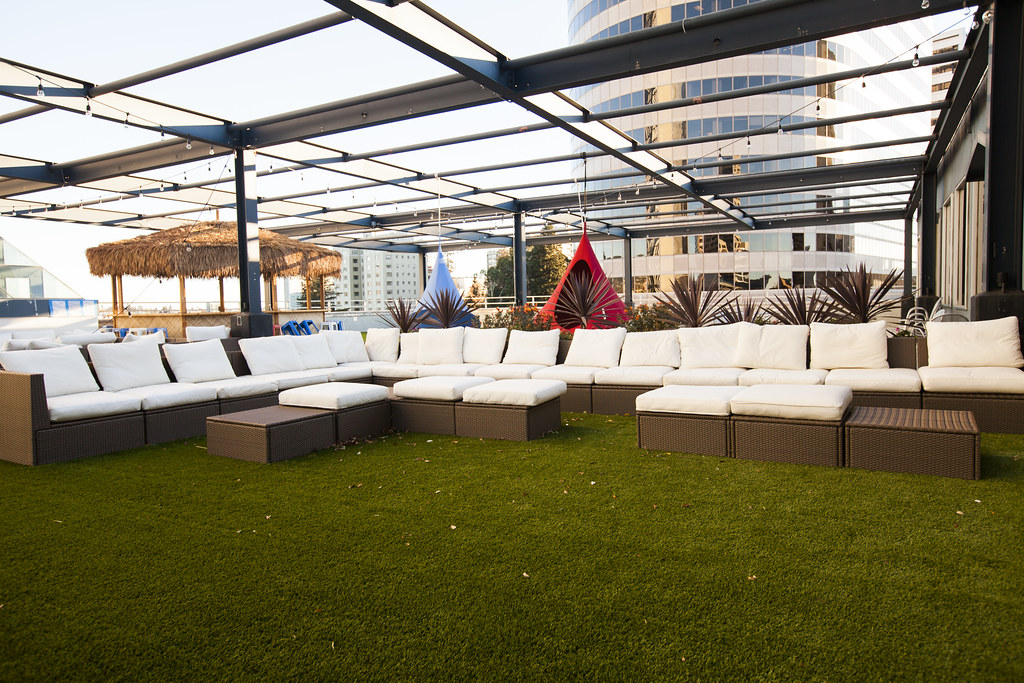
We even got a Tiki Bar up there! With awesome hanging personal hammocks that add fun color and flair.
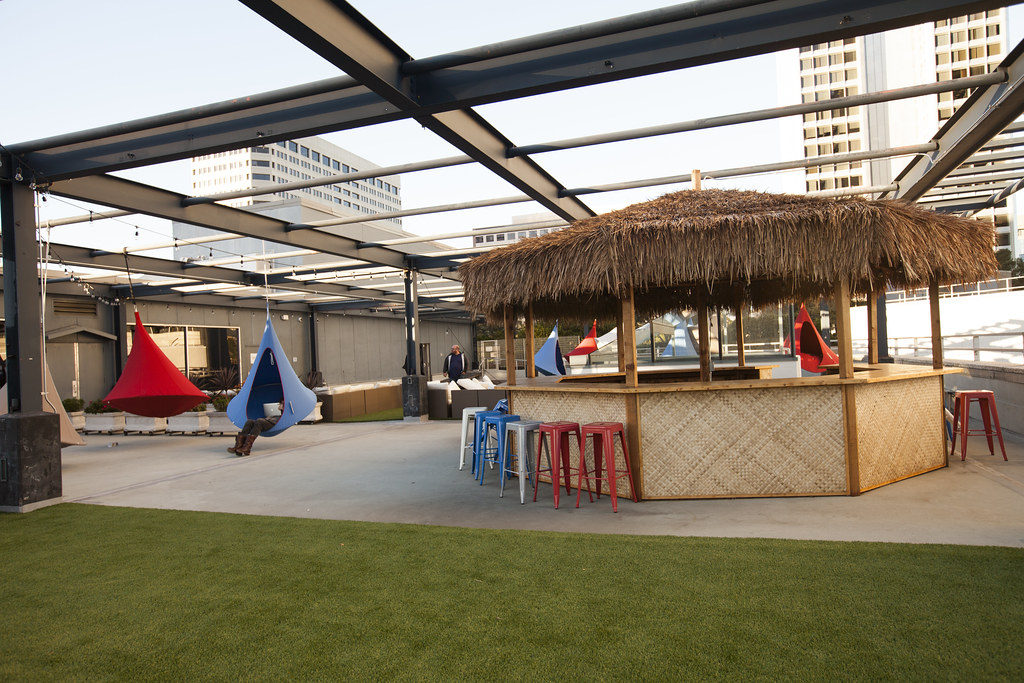
Go check out the space for yourself! The roof garden, event spaces, meeting rooms and co-working spaces are available for bookings, so you'll probably get invited to a party there shortly if you don't book one yourself!
One design concept we bring to every project is what we call a 'Choreography of Space'. "Choreography" in an architectural context is the idea that a space should 'unfold' as you move through it, directing your experience and attention along the way for maximum effect. Through the design, form, and subtle clues, the space creates specific areas and transitions between areas where you have a specific sort of experience.
Japanese gardens make wonderful use of this idea to pack a lot into a little space. Next time you visit one, pay attention to how they manipulate the ground and pathways and plantings to direct your eyes and feet and the 'feel' of where you are. Imagine this; you're walked into a lovely japanese garden, and are standing by a pond. The ground is smooth and flat, and you look out at the amazing open view of the garden. To your right, you see the hint of another smaller clearing on the shore of the pond. You then notice a tiny path farther to your right that you decide to follow, which turns away from that view, and dives into some dense bamboo. The ground becomes uneven, so you look down at your feet, and notice the amazing little tiny flowers in the undergrowth. As the path turns, it gently turns you a different way back towards the pond, which is now blocked from your view by all the plants. The path suddenly opens up at another little clearing, the ground smoothing back out. This clearing is smaller, more private, with a little bench half facing you and half facing the pond. You stop and think for a moment about what you'd see when you sit on that bench, and so you turn to your left and find another amazingly curated vista across the pond, looking at the garden from a new angle, and realize this is the little clearing you saw earlier.

You've maybe only moved about ten feet as the crow flies, but you've experienced a whole journey! You saw a hint of where you were going to go, but then the plantings and uneven ground directed your attention to what's immediately in front of you and slowed your walking. The plantings also blocked your view when transitioning between "vistas", and the tiny details along the way made you feel like you were going somewhere. Then you arrive, the hint of a bench gets you to turn and look up, and a big reveal happens with an amazing view. And a bench to then enjoy that space and it's different identity than where you started, which you can see from here, and see how the two spots relate to each other.
This all sounds pretty 'fuzzy' and fluffy, but when applied to our built environment it can have a profound effect. It's one of the things that gives a building or a space a real identity. And when done well, it makes the space meet it's goals much better. From Apple Stores to Disneyland to casinos, enormous amounts of time and money are spent on this topic, because it really pays off. By purposely directing people's attention and experience the best features of a space can be celebrated, that space's goals better met, and the space's drawbacks minimized.
How does this work in an indoor space? Let's take a look at a recent project we did, The Interval at The Long Now, as a prime example.

When walking by on the street, the combination of huge welcoming doors, warm lighting, and the spectacle of the stunning Orrey draw people into the space, curious to explore.
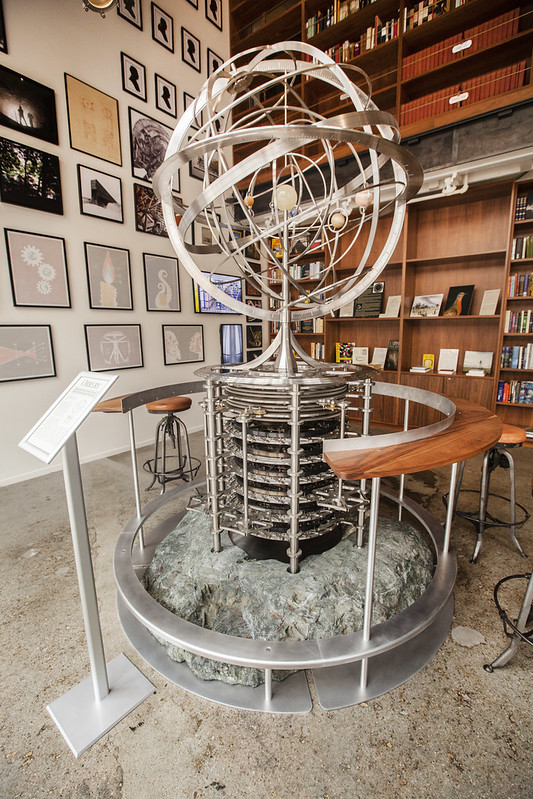
The just-right-sized open floor space in front of the Orrery, and the table around the Orrery giving it more 'presence' in the space, causes one to pause and look around for a moment. Seeing the bookcases beyond, the eye is drawn up and to the right, and then down towards just the corner of the bar and the chalkboard robot.

Looking towards the bar, the long table made from the Chime Generator prototype makes the space feel much bigger than it really is. As you move that direction, to see more of the bar perhaps, as it's mostly hidden from this vantage point behind the wunderkammer under the stairs. This element draws your eye towards it as you pass it, with lots of small details and interesting stories of all the various projects the Long Now is doing, encouraging you to slow down to have a nice transitionary moment along the way.
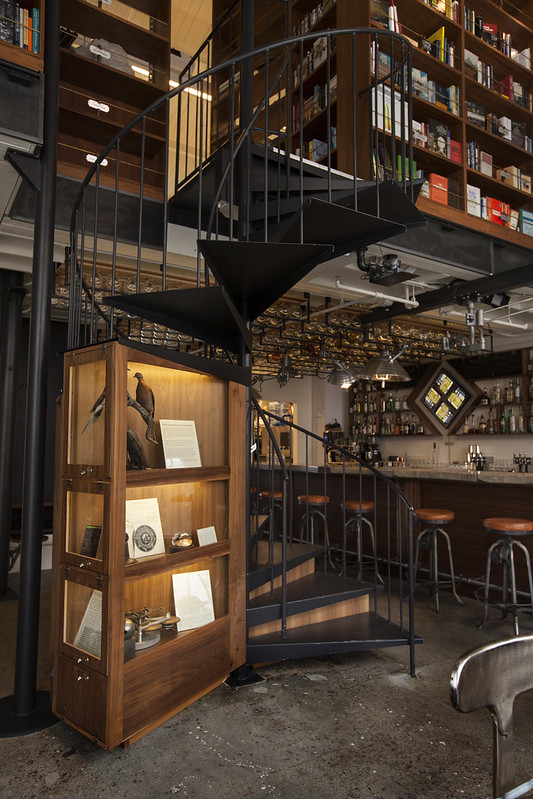
The rounded shape of the wunderkammer encourages you to turn, and the entire bar is revealed. The Brian Eno artwork behind the bar and overhead hanging lights once again draw your eyes up, to see the lovely glowing bottles hanging overhead, which stretch all the way to the little back room and booths along the wall.
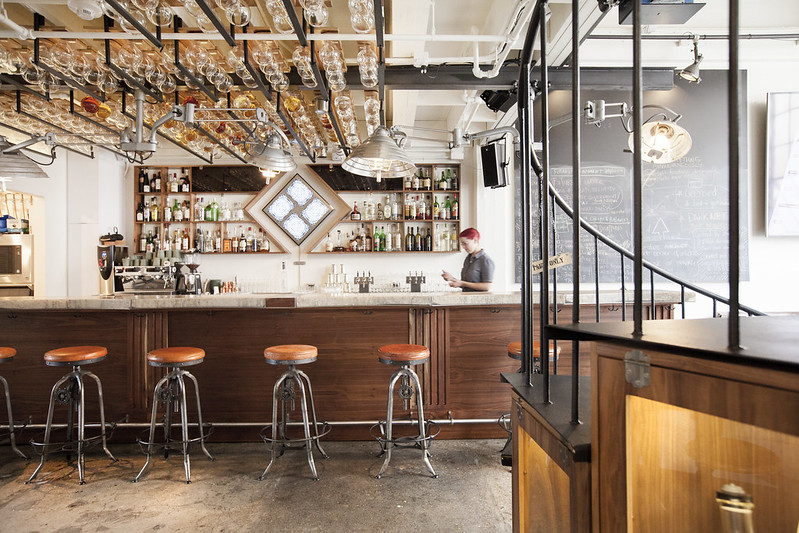
What a good idea it seems now to get a coffee or a cocktail, and either hide away in that back room, or join some friends you saw at the big table as you walked in.

This is just one briefly summarised 'path' where we thought deeply about how people would move from the street outside to the bar itself when exploring the space for the first time. The goals were to draw people in, briefly explain the Long Now's mission and projects, and introduce them to all the main elements within this small space quickly while keeping enough mystery intact for further exploration.

Thinking this way about space requires a deep understanding of people, trying to view the experience of the space from many vantage points, and a clear definition of the goals our client has for that space. It's a human-centric powerful design tool we use on every project, and we work hard and closely with our clients to realize the best choreography and experience we can for their project and all it's users. Just think of what we could do together!
We just got back from showing off our latest design project at Autodesk University in Vegas. Being a CAD technology conference, we used Autodesk Dynamo to programmatically create these "benches" as a seating area around the 'Hive' area. These benches weren't drawn, or even modeled, they were 100% made via Dynamo. 'Generative Design' is design technique where you create goal-driven custom computer programs that then generate the design, and in this case, even the final built object itself.
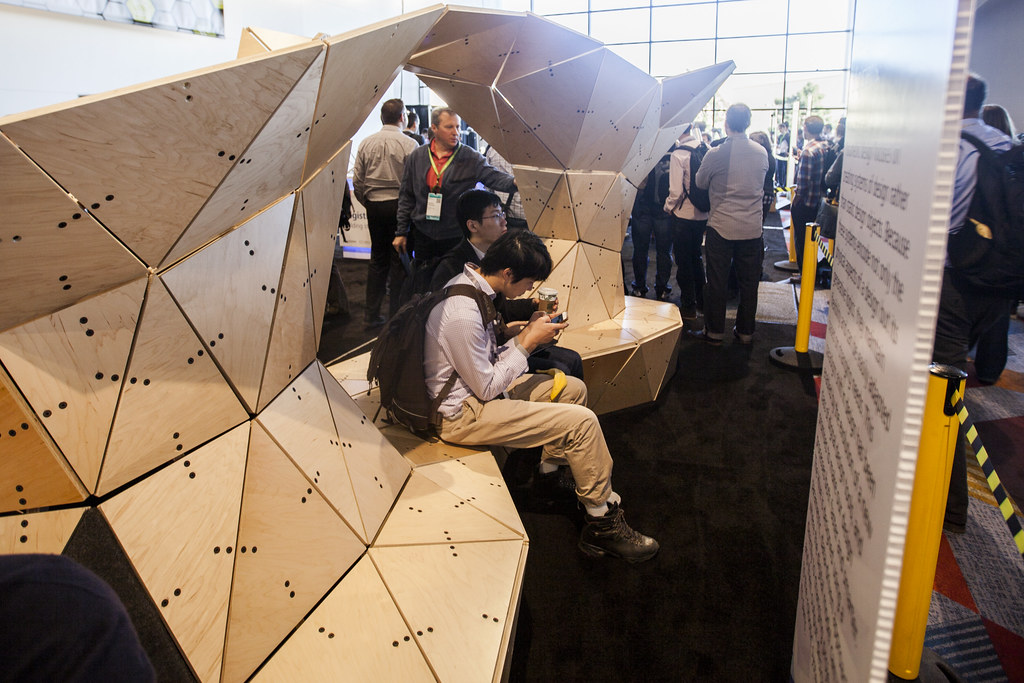
A proof of concept project, we made a point to show off the fasteners, brackets and assembly numbering system on the back. Every connector and triangle are completely unique, so every one needed a label for assembly.
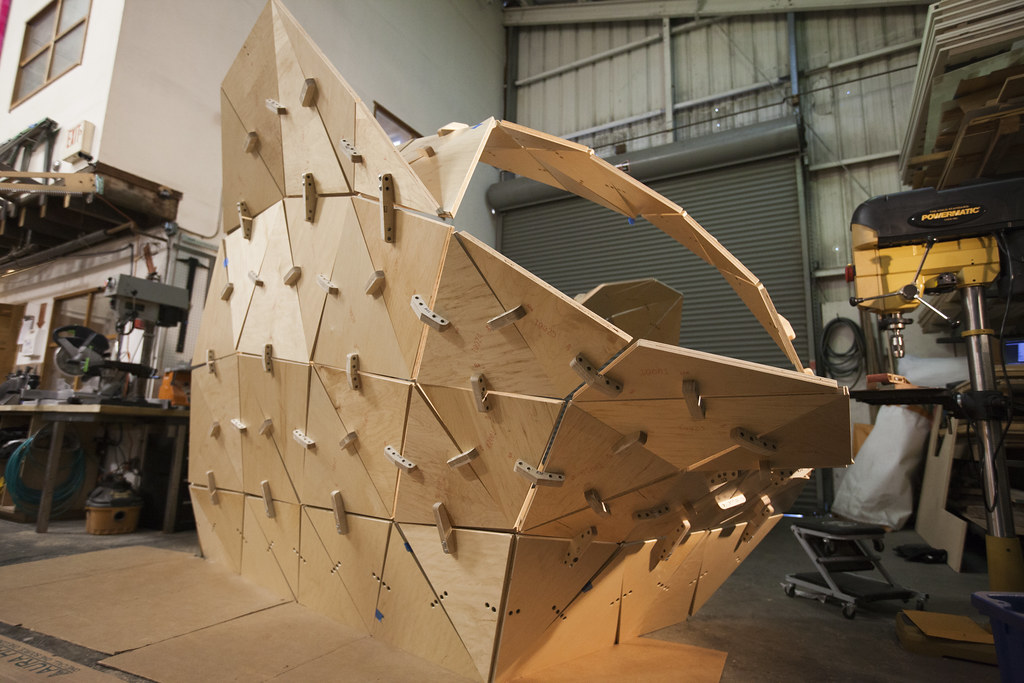
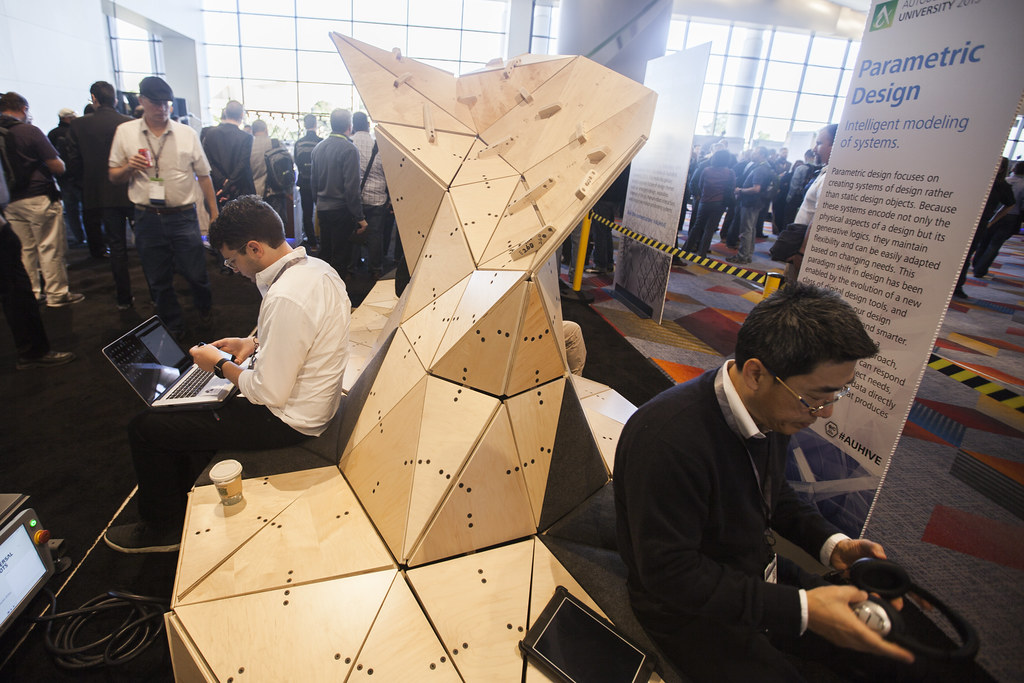
Spanning over 12ft long, each triangle is the perfect shape to create the long undulating form. There's no internal ribs or framework, just triangles and connectors.
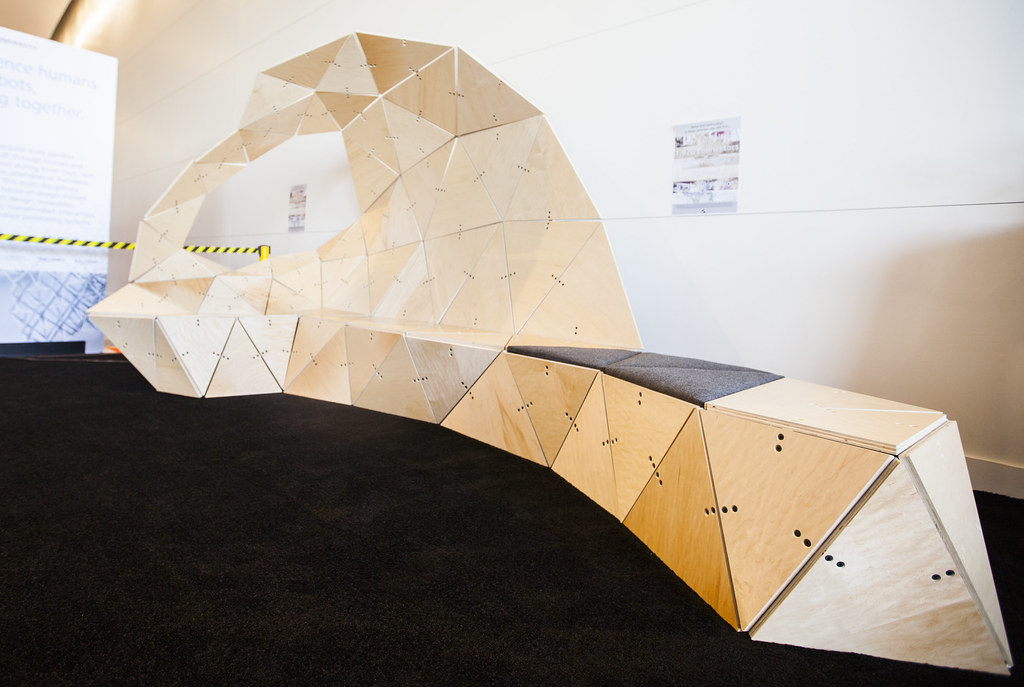
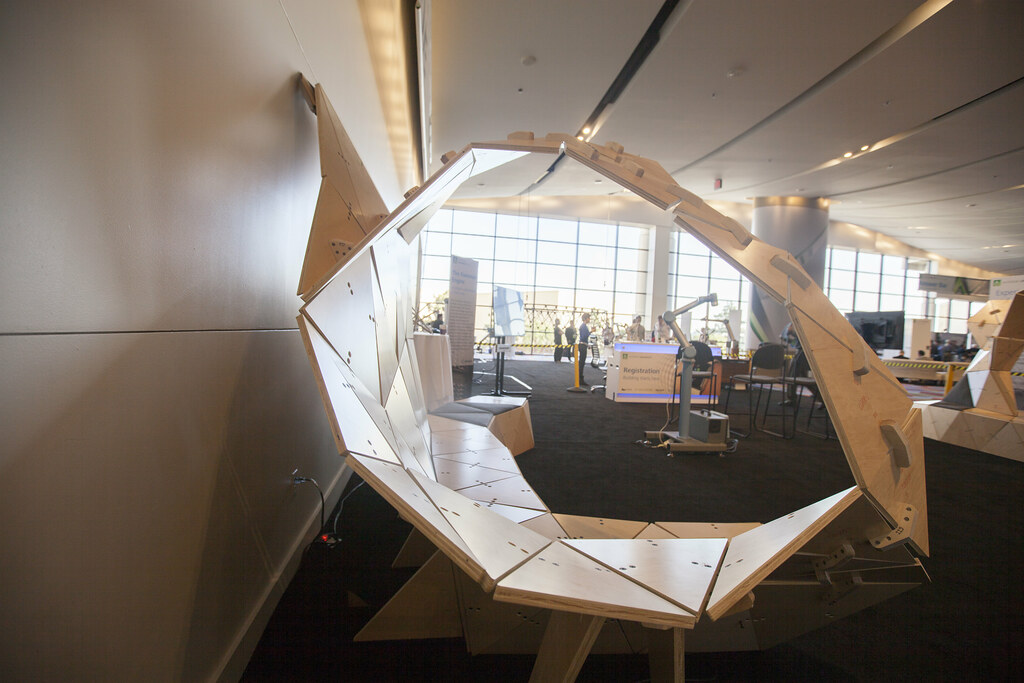
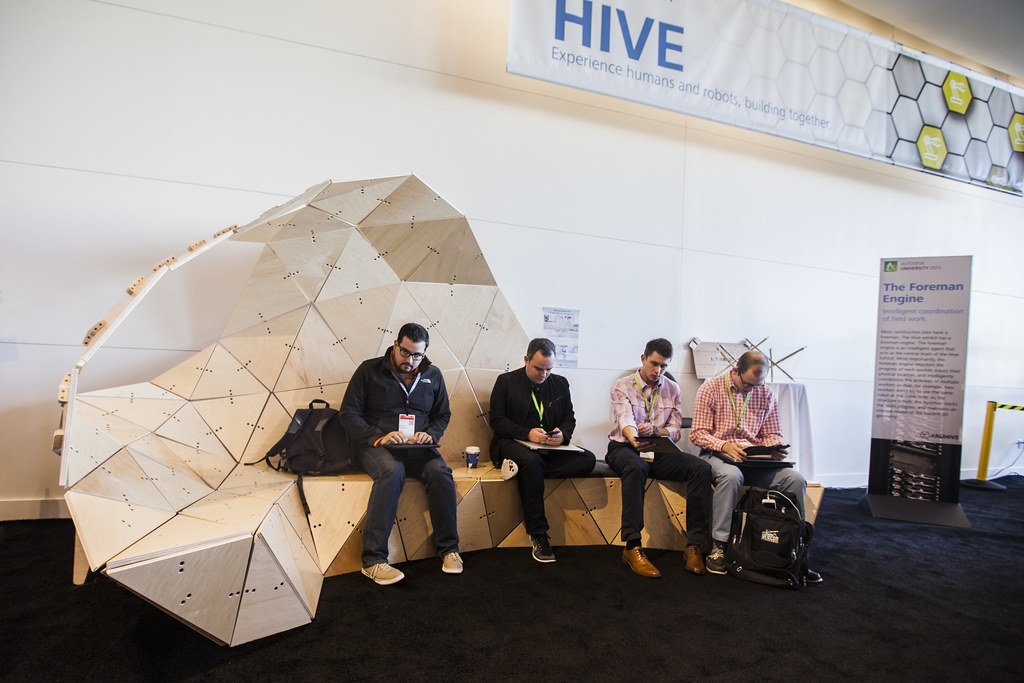
Easily assembled and disassembled with one tool, the triangles bolt into place, aligning with their numbered threaded bracket.

This was a fun project that allowed us to push limits of programmatic design and fabrication entirely with Dynamo. If you'd like to join in the fun, we've open-sourced our fabrication-focused Dynamo add-ons, and you can find them here on GitHub.
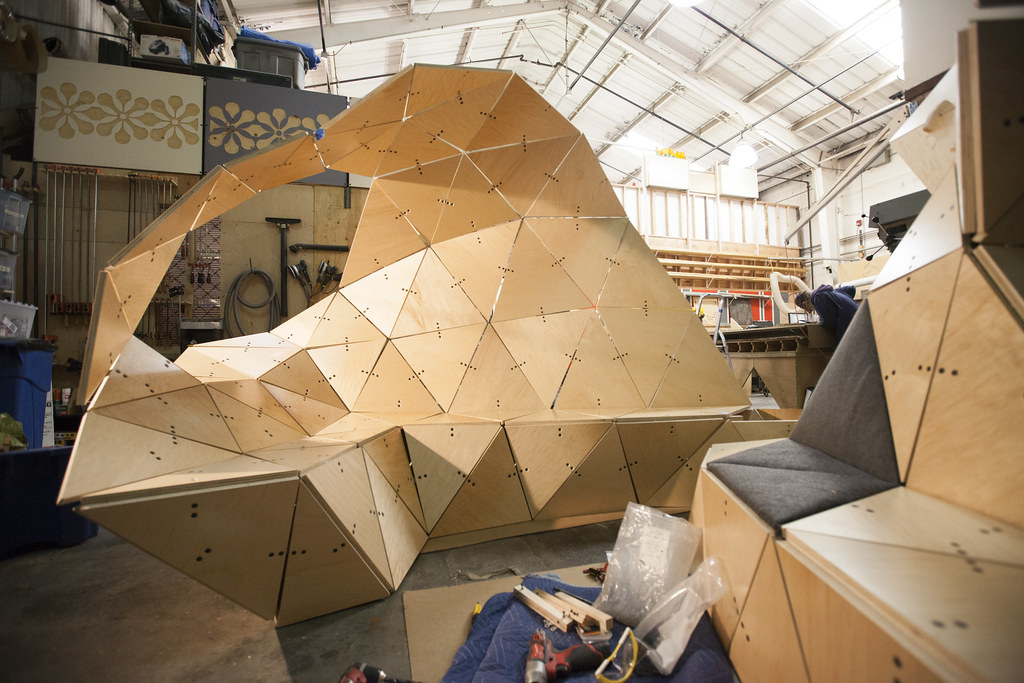
Several thousand bolts, hundreds of triangles, ten days, five people, and one Dynamo script to make both benches. Being artists, fabricators, architects, and builders, our company is able to produce creative elements like this quickly and easily, and make it look really cool in the end! Just think of what we could do for you.
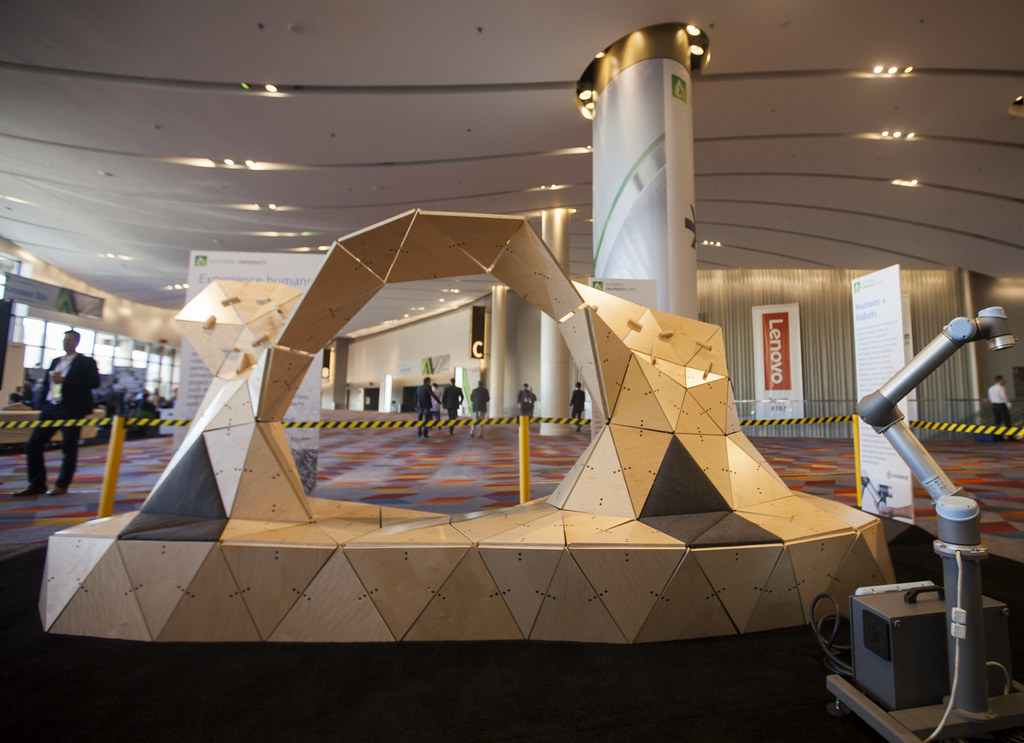
If you happen to pick up this months issue of Make Magazine, you will see a nice big photo of a piece we made for The Hattiesburg Zoo in Mississippi.
Check it out!
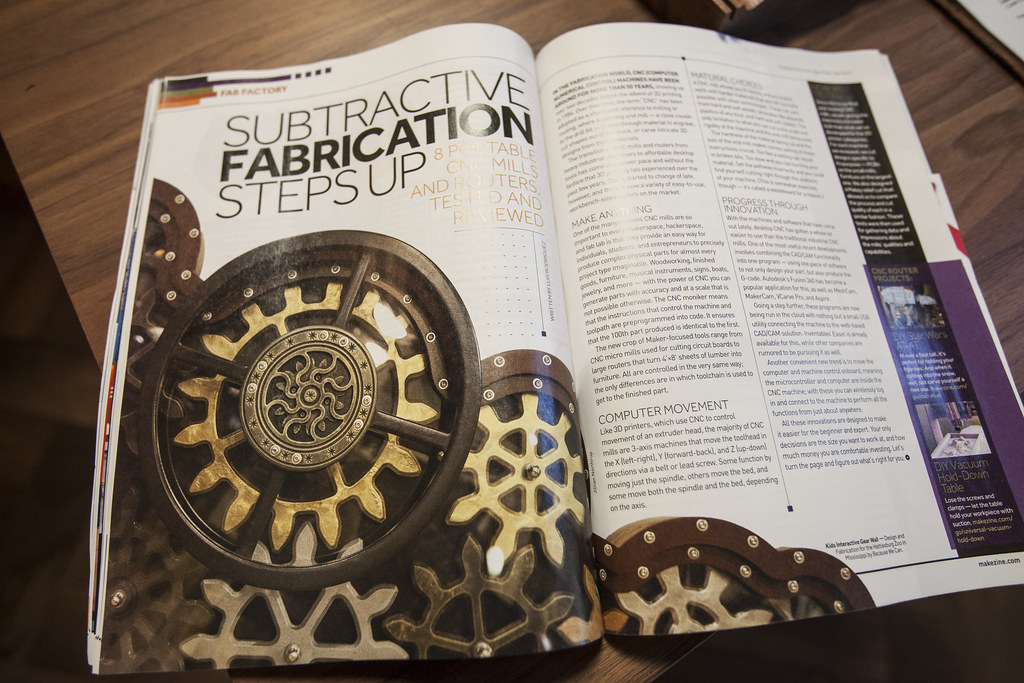
The article is all about the cool things you can do with subtractive fabrication. Which is what we have been integrating into our projects for over 10 years!
If you want to see more about this showcased project check it out on our project page.
We'll be presenting at East Bay Mini Maker Fair this Sunday, Oct 18th at 12:15PMCome on by and say hello!
We'll be presenting in the Magnolia Bldg Great Room on the "MAD SKILLZ STAGE" That alone should make you want to come see us.
Our talk will be on Making to Make: How Creating Our Own Custom Tools Helps Us Make Great Things
We would love to see you. This is a great smaller Maker Faire that is interesting to the whole family. Sunday, Oct 18th 10AM-5PM. Park Day School, 360 42nd St, Oakland
Use the discount code: MAKERFRIEND for 15% off tickets - but you must buy tickets BEFORE midnight Sat night as this is no good day of the show.

The NewCo Event is happening this week with lots of cool business opening their doors and giving presentations of the goings on inside.We're participating this Thursday morning, and we hope to see you there!
Visit us at our office during @NewCo Oakland Oct 8. Get 30% off tickets with the code HC30Oak #NewCoOAK
The new Dolby Headquarters on Market street in downtown San Francisco has been getting some great press.We were excited to work on the project, helping to fill the building with walls of Dolby relevant art!
Our projects were mentioned in these recent articles. One in The Chronicle and one in Fast Company.
You can read more about the 16 story office building filled with commissioned art, and see images and descriptions of our pieces in CNET and Business Insider.
To see all the pieces we did for this skyscraper of a building, check out our Dolby Art Walls project page.
